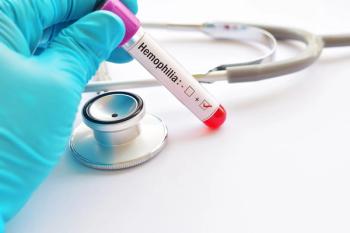
Pediatric pneumonia: Antibiotic use and treatment failure
Severe outcomes among children with pneumonia were uncommon, regardless of whether antibiotics were received based on study results.
Investigators of a study recently published in JAMA Network Open sought to determine if receipt of antibiotics among children with pneumonia, managed as outpatients, is associated with a decreased risk of treatment failure.1
Background
According to the study, pneumonia is diagnosed in 1.5 million ambulatory care visits every year in the United States.2 Current guidelines from the Infectious Diseases Society of America recommend that preschool-aged children with pneumonia, who are well enough to be treated in an outpatient setting, do not routinely require antibiotic treatment. But because of bacterial coinfection concerns and a lack of published data to guide a decision to not prescribe antibiotics, in practice, antibiotics are prescribed for most children.1
Treatment with antibiotics among children, when they are not likely to benefit from them, can lead to antibiotic resistance and expose children to potential risks like diarrhea, rash, mislabeling of allergy, and severe complications in rare cases.1
"The objectives of this study were to identify the frequency with which children diagnosed with pneumonia in outpatient settings do not receive antibiotics and to compare the risk of treatment failure and severe outcomes between children who receive antibiotics and those who do not," wrote the study investigators. "A clearer understanding of the natural history of untreated pneumonia and the comparative effectiveness of antibiotic treatment for pneumonia may inform future studies that identify which children with nonsevere pneumonia can be managed safely without antibiotics."1
Study details and results
Using a retrospective design, the investigators identified Medicaid-insured children and adolescents aged 17 years or younger who have been diagnosed with pneumonia and discharged from ambulatory settings from January 1, 2017 to December 31, 2019. To mitigate confounding, propensity scores matching was used.1
Treatment failure and severe outcomes within 2 to 14 days after the index visit was the main outcome measure, with treatment failure including:
- Hospitalization or ambulatory revisits for pneumonia
- New antibiotic dispensation with a same-day ambulatory visit
- Complicated pneumonia
In all, there were 103,854 children with pneumonia in the analysis, of which the median age was 5 years, and 52.6% were male. Nearly 20% of children (19.7%; n = 20,435) did not receive an antibiotic within 1 day, and the propensity score-matched analysis included 40,454 children, or 20,227 per group.1
Among children who did not receive antibiotics, treatment failure occurred in 10.7% (n = 2167) of individuals, compared to 8.7% (n = 1766) of children who did receive antibiotics (risk difference, 1.98 [95% CI, 1.41-2.56] percentage points).1
"The most common individual component of the treatment failure outcome was a new dispensed antibiotic prescription with a same-day ambulatory care visit, which occurred in 1783 children (8.8%) who did not receive antibiotics and in 1422 (7.0%) who did (risk difference, 1.78 [95% CI, 1.26-2.31] percentage points)," wrote the study authors.1
Regarding the sensitivity analysis that extended the exposure window for antibiotic receipt from 0 to 1 day to a window of 0 to 2 days, treatment failure was present in 7.3% of children children (n = 1358) who did not receive antibiotics and 7.1% (n = 1314) among children who did (risk difference, 0.24 [95% CI, −0.29 to 0.76] percentage points).1
For severe outcome individuals, in which the outcome occurred after a mean of 3.9 days, the median age was 4 years. In this group, 33.9% (n = 232) had a complex chronic condition and 56.2% (n = 384) were initially evaluated in an emergency department. Among this group, investigators observed no significant differences in these characteristics among those who did or did not receive antibiotics.1
Conclusion
Severe outcomes among children with pneumonia were uncommon, regardless of whether antibiotics were received based on study results, which noted that nearly 20% of children did not receive antibiotics within a day of diagnosis.1
"These results suggest that some children diagnosed with pneumonia can likely be managed without antibiotics and highlight the need for prospective studies to identify these children," concluded the study authors.1
References:
1. Shapiro DJ, Hall M, Neuman MI, et al. Outpatient Antibiotic Use and Treatment Failure Among Children With Pneumonia. JAMA Netw Open. 2024;7(10):e2441821. doi:10.1001/jamanetworkopen.2024.41821
2. Poole NM, Shapiro DJ, Kronman MP, Hersh AL. Ambulatory antibiotic prescribing for children with pneumonia after publication of national guidelines: a cross-sectional retrospective study. Infect Dis Ther. 2020;9(1):69-76. doi:10.1007/s40121-019-00276-3
Newsletter
Access practical, evidence-based guidance to support better care for our youngest patients. Join our email list for the latest clinical updates.











